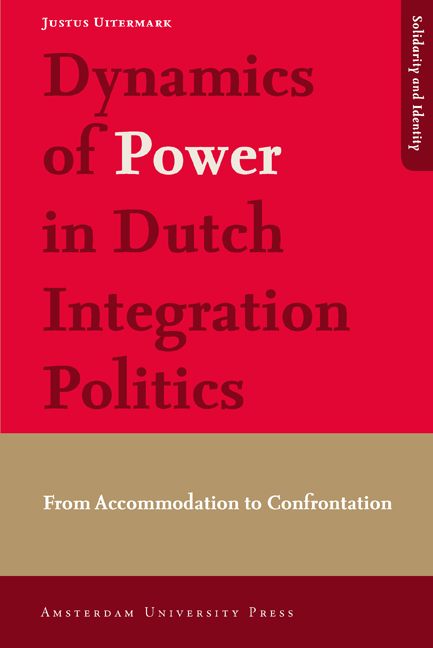Appendix 2 - Assigning Codes to Relations Between Actors
Published online by Cambridge University Press: 15 January 2021
Summary
To map relations among actors in the integration debate, the corpus was coded with the computer program MaxQda for text analysis. Student assistants were assigned the names of 134 opinion makers. These names were selected according to a process of trial and error. An initial list of 20 opinion makers whom I expected to feature prominently was expanded with names encountered during the course of research. For instance, it became apparent during the initial coding sessions that administrators (like ministers) featured more prominently than I expected; I therefore decided to include all ministers with responsibility for integration issues during the period under investigation (1990-2005). The references of the 134 pre-selected actors to other, non-selected players were also coded. For instance, the sociologist Bram de Swaan was not included in the list of opinion makers, but his references to pre-selected actors are coded, as are references of pre-selected actors to him. References of non-selected actors to non-selected actors are not included. Note that this method leads to the neglect of actors with little resonance; we can get an idea of the relations of central figures and the actors with whom they are related, but not of all actors within the debate.
Apart from the direction (passive or active), references are distinguished according to their nature (positive, negative and neutral). In many cases, it is difficult to decide whether a remark is “negative”, “neutral” or “positive”. For instance, the phrase “Bolkestein opened the discussion” can be read as a factual statement, as an accusation (when the author feels that the topic is inappropriate for public debate) or as a mark of approval (when the author welcomes public debate on this topic). The position of the author usually becomes clear in the course of the article. In this case, a score of “neutral” would be attributed to Bolkestein's remark, while subsequent quotes that reveal the position of the author would be coded separately. There are many other examples of ambivalent fragments. Irony is quite frequent, and sometimes a remark can simultaneously convey a negative and a positive judgment. As a rule, negative and positive codes are assigned only where references are unambiguous.
- Type
- Chapter
- Information
- Dynamics of Power in Dutch Integration PoliticsFrom Accommodation to Confrontation, pp. 271 - 272Publisher: Amsterdam University PressPrint publication year: 2013



